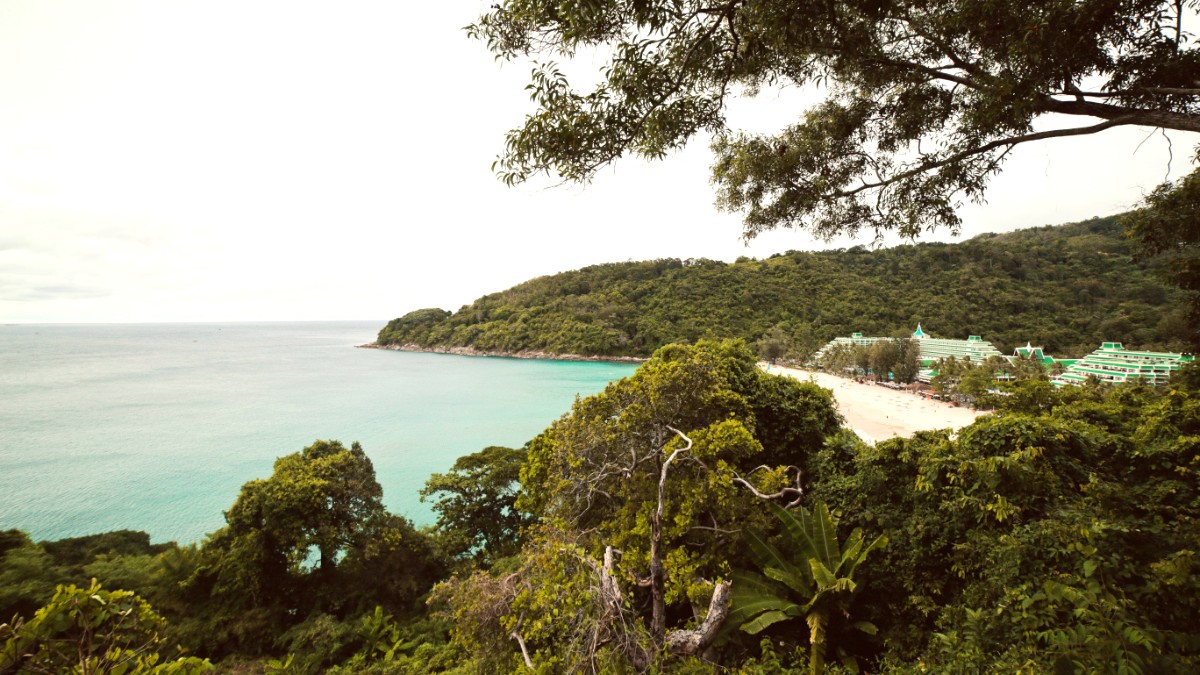
Andaman Coast, Thailand
This period generally brings hot and sunny weather. Pack lightweight, breathable fabrics like cotton, linen, or moisture-wicking synthetics. Shorts, T-shirts, and tank tops make up the main part of your daytime wardrobe. Evenings are pleasant but occasionally feel slightly cooler, specifically on boats or by the sea.
While still warm, this season brings more rain. Pack similar lightweight clothing. A light, compact Rain jacket or a Small umbrella proves useful for sudden downpours. These items store easily in a day bag.
These work for everyday wear, beach strolls, and moving around town. They are easy to slip on and off.
Useful for rocky beaches, exploring tide pools, snorkeling, or walking in areas with slippery surfaces like near waterfalls. They protect your feet from sharp rocks and coral.
Pack a pair for more active pursuits, like hikes in the national park or exploring other islands where greater support is needed.
Having your documents in order and accessible holds significance for smooth travel. Keep both physical and digital copies.
Thailand runs on 220V with a frequency of 50Hz. You will encounter multiple plug types: Type A (two flat parallel pins), Type B (two flat parallel pins with a round grounding pin), Type C (two round pins), Type F (two round pins with two grounding clips), and Type O (three round pins in a triangle). A Universal travel adapter with multiple plug options is good for compatibility. Portable chargers and power banks are important for keeping devices charged, especially during island hopping tours, long travel days, or when away from power outlets.
Most modern smartphones work with Thai mobile networks. Local SIM cards present affordable data and call rates. Major providers include AIS, TrueMove H, and DTAC. Purchase SIM cards at airports upon arrival or at local convenience stores (7-Eleven, FamilyMart) and official provider shops. Your passport will be necessary for registration. A Waterproof camera proves necessary for capturing memories during snorkeling, diving, or any water activities.
Cloud storage services (Google Drive, Dropbox) are good for backing up photos and copies of documents.
An External hard drive or a large USB drive serves well for backing up large media files if you travel with a camera.
Consider a VPN service like NordVPN or ExpressVPN for secure browsing on public Wi-Fi networks.
A well-stocked health and wellness kit ensures readiness for minor ailments or emergencies. Always keep prescription medications in their original packaging with clear labels. For controlled substances, a doctor's note explaining their medical necessity proves useful.
Ko Lanta experiences high temperatures and strong tropical sun. Insect-borne illnesses are also a consideration. Your kit helps protect against these environmental factors.
While masks, snorkels, and fins generally appear available for rent on tours, bringing your own Mask and snorkel ensures a better fit and hygiene.
If you possess a diving certification, bring your certification card (PADI, SSI, etc.) and logbook. Most other gear (BCD, regulator, Wetsuit) can be rented from dive shops on the island.
For kayaking or stand-up paddleboarding (SUP), a rash guard provides sun protection. A Waterproof dry bag keeps your phone, camera, and other valuables safe from water splashes.
These additional items add to comfort, security, and ease during your Ko Lanta trip. For long ferry rides, minivan transfers, or overnight bus journeys if you plan travel beyond Ko Lanta, Neck pillows and Eye masks are useful. A Small padlock aids in securing hostel lockers or luggage.
Many locations offer water refills for a fee or free. Beyond general tropical travel items, Ko Lanta does not demand highly specialized gear. Focus on comfort, sun protection, and water readiness. Larger sizes of clothing and footwear can prove challenging to find for Western body types.
Reduces plastic waste. Many refill stations available.
For markets and shopping. Minimizes single-use plastic bags.
Protects marine ecosystems, especially coral reefs, during water activities.
Avoids disposable cutlery when eating street food or takeaways.
Consider rolling your clothes tightly to save space and reduce wrinkles. Use packing cubes for better organization and compression. Wear your heaviest shoes and clothes on travel days.
Remember to pack items for both hot, sunny days and potential rain, especially outside the peak dry season. Sun protection and insect repellent are top priorities. Prioritize items that dry quickly.